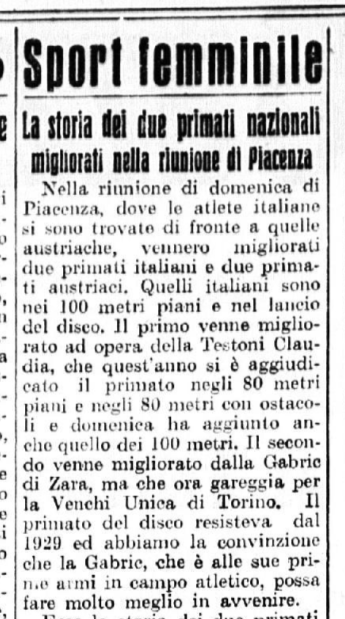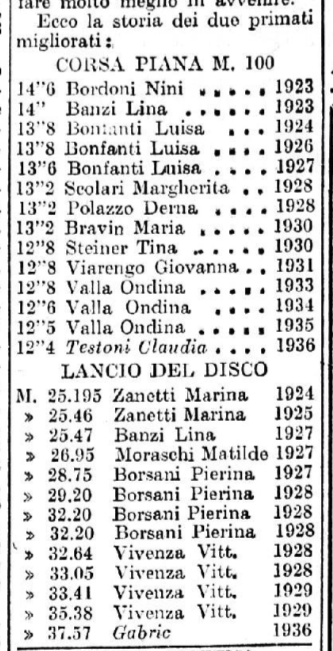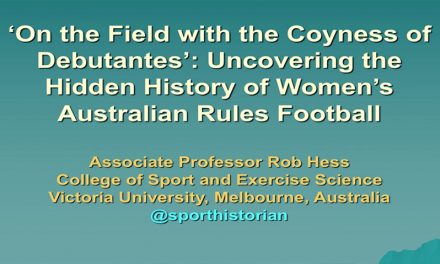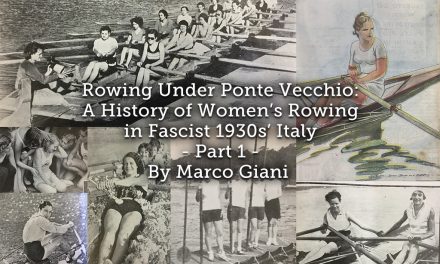The author would like to express thanks to Lyana Calvesi for the images from Archivio personale Gabre Gabric [ApGG] and to Alice Vergnaghi and her father for their help with the interpretation of the historical images.
Please contact either Playing Pasts or the author if you wish to use any of the images from this article
As can be read in the Playing Pasts article about Gruppo Sportivo Giovinezza [GSG] [see https://bit.ly/2VFvcs4], the Thirties was a good decade for women’s sports in Milan. The women living in one of the most important industrial cities of Italy wanted to join the sports movement helped by the Fascist regime: they just needed to organize and concentrate their energies … As we have already seen regarding GSG, after the end of Gruppo Femminile Calciatrici [GFC], the first women’s football club in Italy, in late 1933 athletics and basketball became the two standard sports that females could practice. The only question was: where?
Under Mussolini, the Fascist regime decided to adopt ideas emanating from the USA, Dopolavoro. An entertainment [theatre, games, trips] and sports society linked to a factory or company, where workers could spend their free time together, the main goal being to allow employees to ‘escape’, take their minds off their work, [all trade unions except Fascist ones were banned in the mid-1920s].
In Spring 1935 some former GSG athletes such as Franca Agorni, Luisa Zuffi, Brunilde Amodeo [who was also joined by her sister Wanda, which proved to be a modest thrower], Ester Dal Pan and the Colombo sisters [Jolanda and Carla] joined the Dopolavoro Istituto Previdenza [DIP], which today is the INPS, the main entity of the Italian public retirement system. They were all trained by Cifarelli, a card-carrying Italian Athletics Federation [FIDAL] caoach. During mid-March 1935 a meet between GSG and DIP took place in Milan, DIP winning over their former colleagues, with Luisa Zuffi claiming 4 gold medals [shot put, javelin, discus throw, long jump] and only the Lucchese sisters able to defend Giovinezza’s honour.
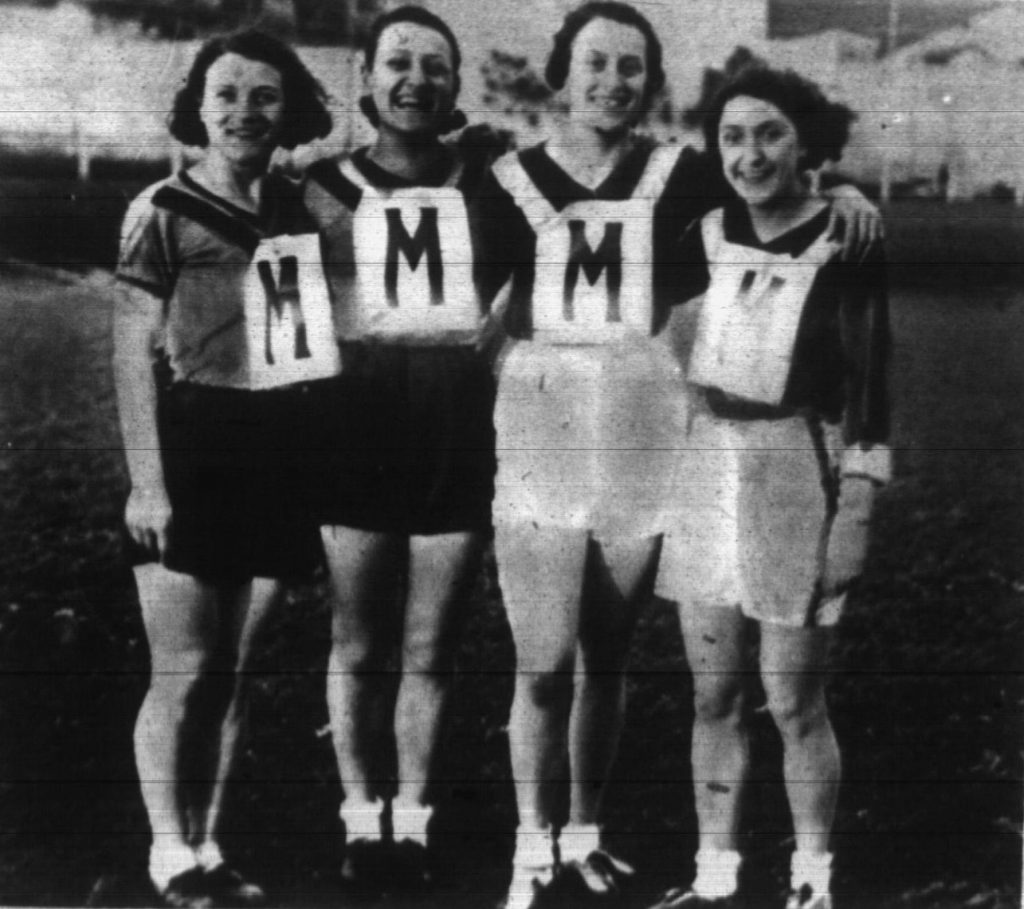
Original sources refer to women’s athletics meeting at the Forza e Coraggio sports centre in Milan. The “V” shirt being representative of the DIP.
From left: Jolanda Colombo, Brunilde Amodeo, possibly Luisa Zuffi and Franca Agorni
Source: La Domenica Sportiva, 29/05/1935, p. 13.
Then, in July 1935, the Italian sports press start to refer to a new women’s athletics team, the Dopolavoro team of La Filotecnica [GSLF], a renowned Milanese optical industry, today known as Salmoiraghi Viganò, one of the most prominent spectacle company in Italy. At that time La Filotecnica had almost 500 workers, its Dopolavoro being located in via Sanzio, 4.
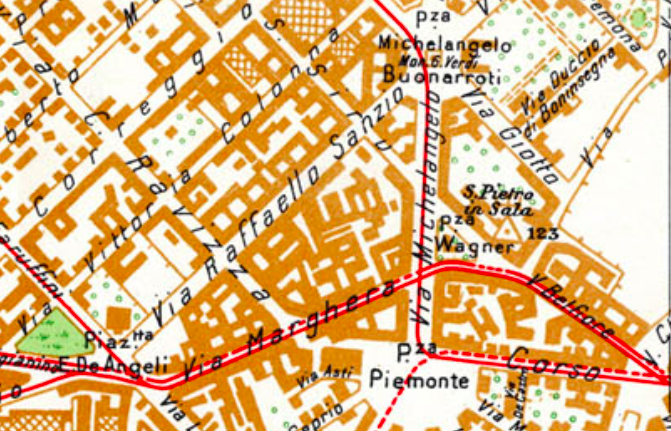
Via Sanzio, where GSLF was located in 1937.
Source: http://www.stagniweb.it/mappe/Mi937.jpg
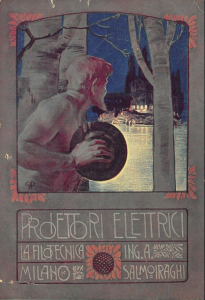
A Filotecnica headlamp ad
Source: https://bit.ly/2Oht4m9
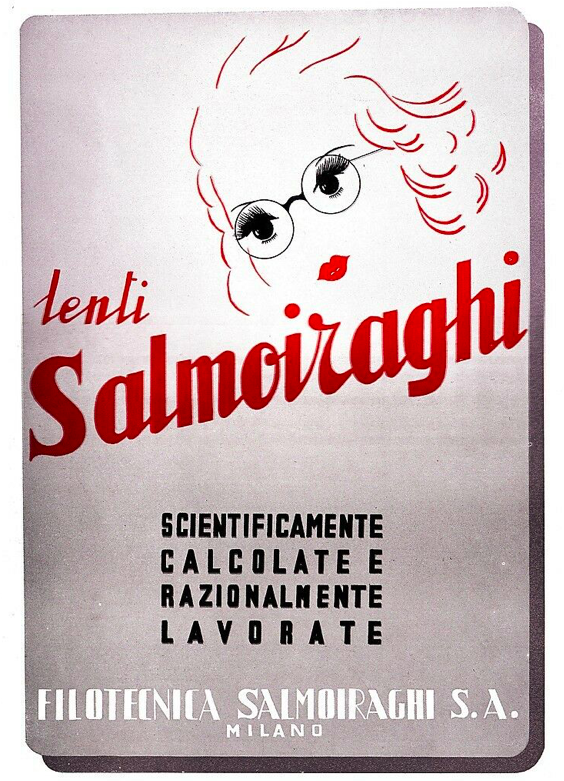
1942 Salmoiraghi Filotecnica spectacle advertisement
Source: https://bit.ly/2Wbm2np
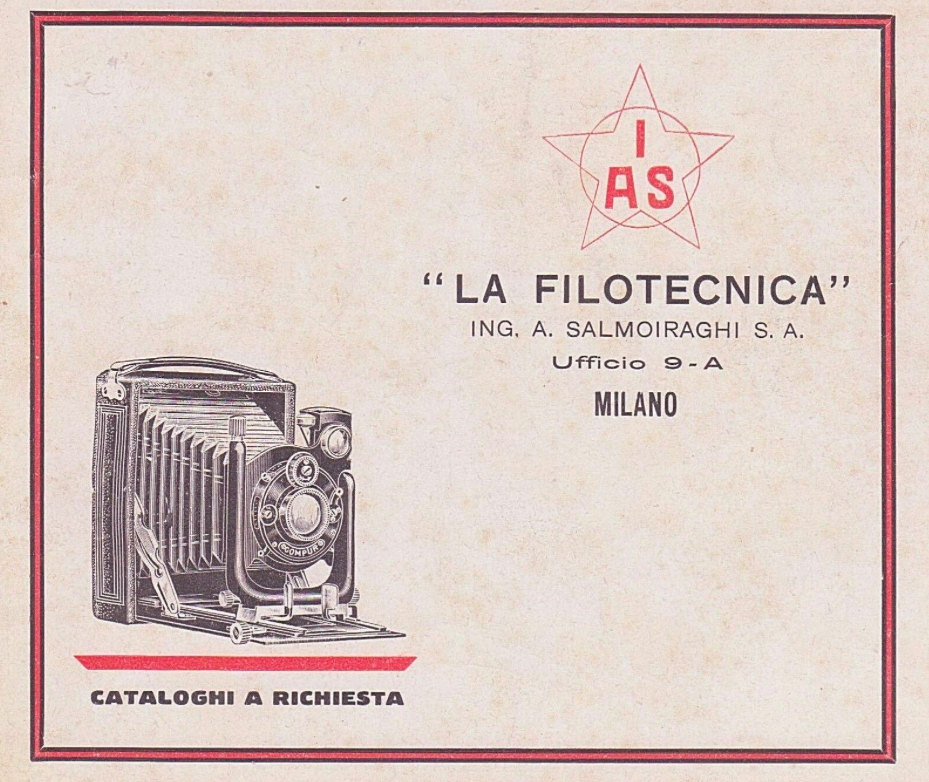
1925 La Filotecnica photo camera advertisement
Source: https://bit.ly/3elpl1J
The first-ever recorded meet in which GSLF competed was a women’s athletic competition on 14 July 1935, in Omegna, a small mountain village near Maggiore Lake, Northern Piedmont and organised by the local Dopolavoro Comunale. The competition was quite hard, but the novice Filotecnica succeeded in finishing third with 24 points, just behind Dopolavoro DAS, Turin on 28 and the invincible GS Venchi Unica, with a winning total of 82. The new Milanese team also ranked above Ondina Valla’s team, Bologna Sportiva, who ended the day on 21 points and most importantly over GS Giovinezza with 19, from where some of GSLF athletes came from. Step into the shoes of Luisa Zuffi, at her first competition wearing the Filotecnica shirt, she ranked 4th in high jump [1,35m], just 6 cm lower than Ondina Valla, who was ranked 2nd!
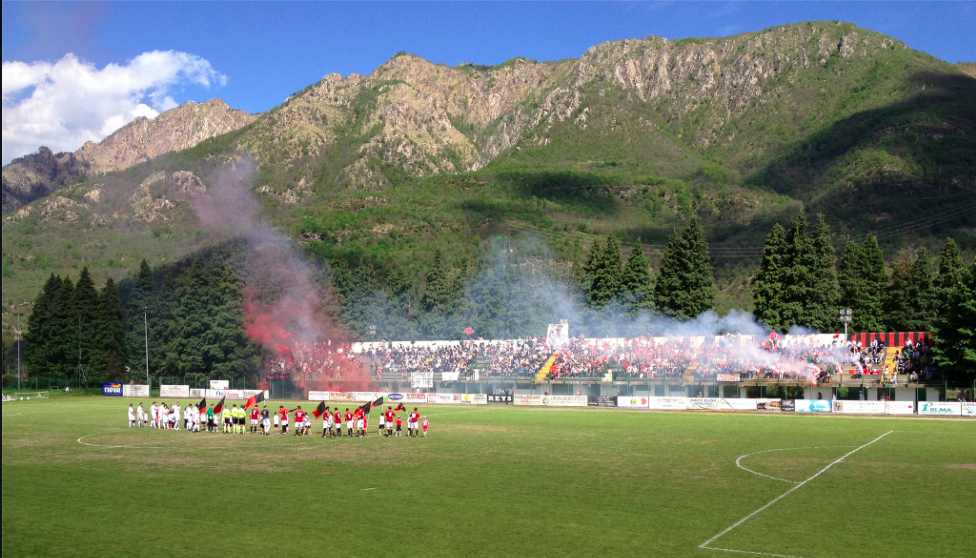
Today this is the Omegna football pitch: Note the mountains on the background
Source: https://www.facebook.com/pg/omegna.calcio/posts/
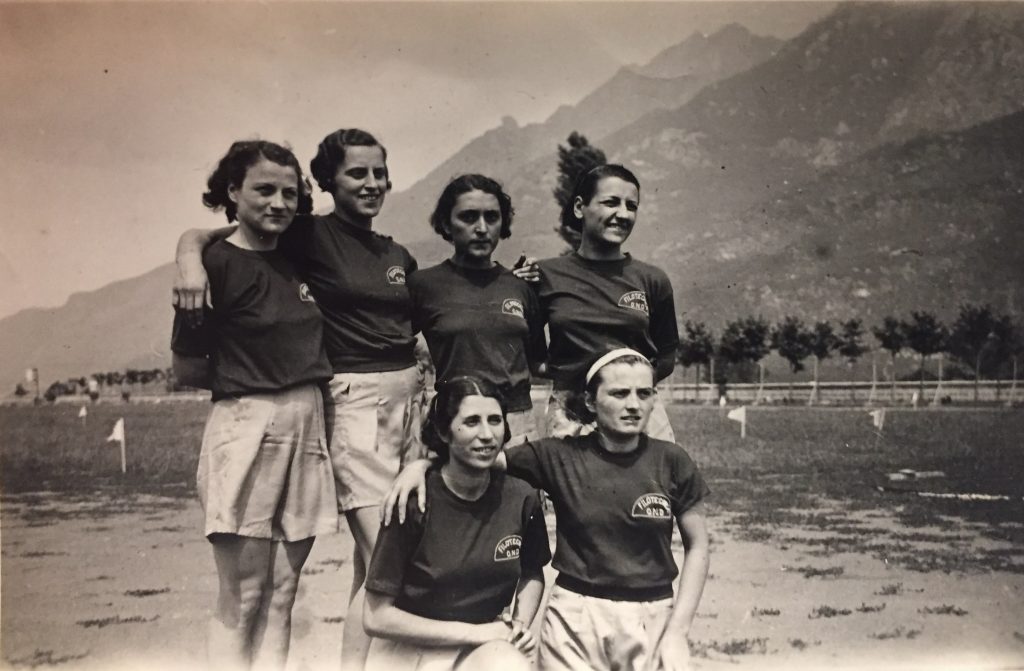
The outstanding debut was previously seen in a picture that Playing Pasts readers may remember [see https://bit.ly/2yKHIOL ], which luckily former GFC football player Brunilde Amodeo decided to preserve in her archive.
Now we can identify the players with more certainty: standing [L to R] Jolanda Colombo, Luisa Zuffi, Franca Agorni, Brunilde Amodeo, front row Ellera Stroppa [kneeling] and Carla Colombo
Source: Archivio privato Brunella Bracardi [courtesy of Francesco Bacigalupo]
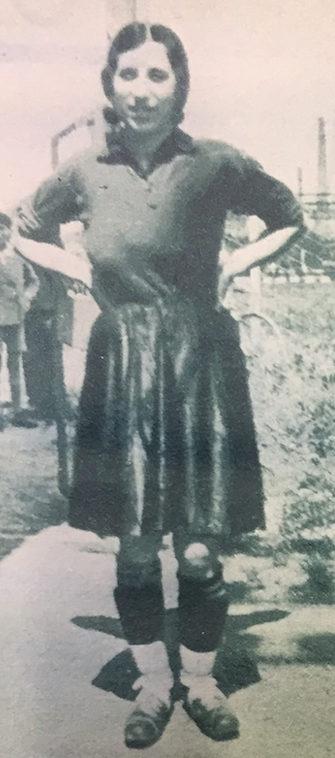
Ellera Stroppa in the GFC football strip [Summer 1933]. “Ellera” is quite rare and old-fashioned female name meaning ‘ivy’
Source: Il Calcio Illustrato, 26/07/1933, p. 7.
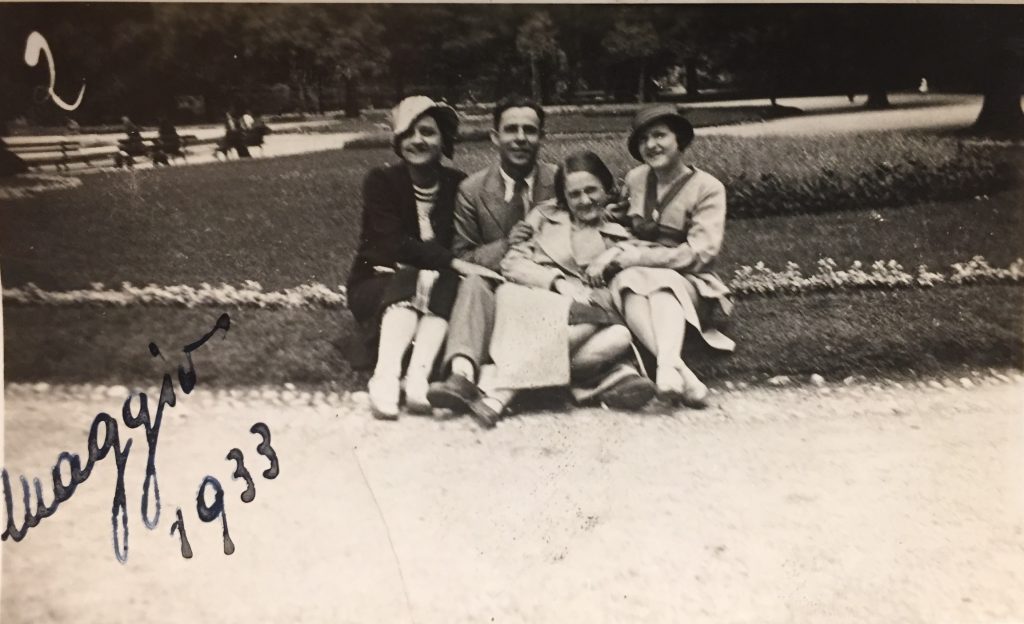
At the onset of GSLF – news of trials for the team were more than likely spread by word-of-mouth
Maria Bucher competed for GSLF at just one event in Summer 1937, she had been a friend of Brunilde Amodeo since 1933, when this photo was taken, probably in Parco Sempione, Milan [Brunilde is the white hat and Maria, leaning backwards]. After Summer 1937, neither Brunilde nor Maria took part in GSLF events.
Source: Archivio privato Brunella Bracardi [courtesy of Francesco Bacigalupo]
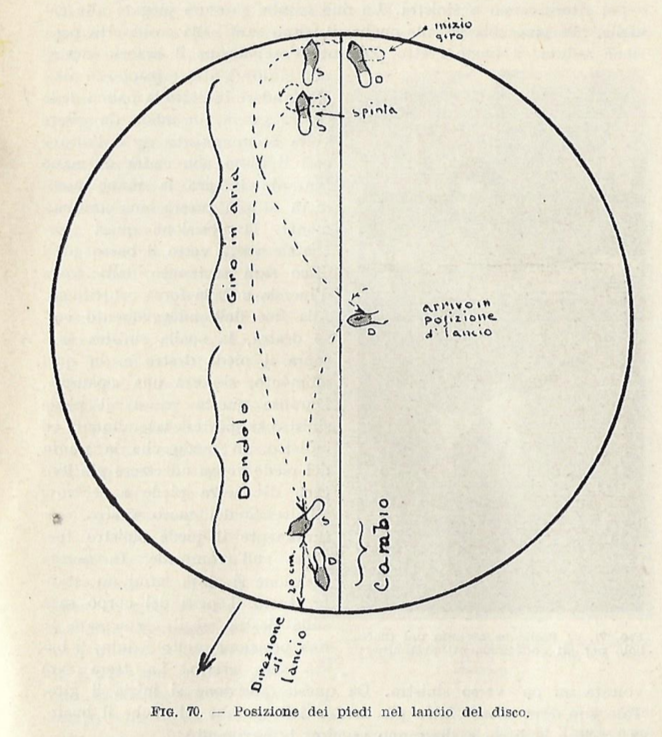
How to use feet during a shot put event.
Source: Atletica femminile [1943], p. 107.
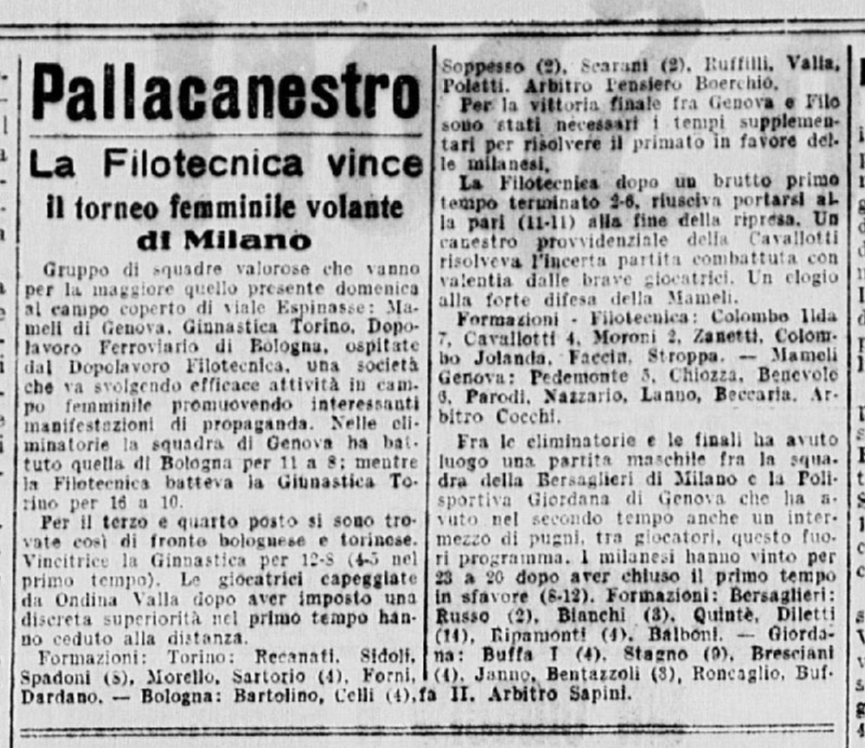
On February 1936, GSLF team won a basketball event in Milan, the event included a lot of Italian teams. The journalist writes that the captain of Bologna team was the renowned athlete Ondina Valla: this clipping is very important historically, since we know almost nothing about Ondina’s basketball activity.
Source: La Gazzetta Dello Sport, 25/02/1936
In late April of 1936, Olympic year, FIDAL organized a kind of Olympic trials in Firenze, Maria Agorni claimed gold in the long jump with a leap of 4,74m and bronze in 100m. Luisa Zuffi took silver in long jump and 200m bronze. Unluckily for the Filotecnica athletes, no long jump event was scheduled for the Berlin Games, but Franca took her chance as she was member of the quartet ranked 2nd in the 4x100m relay, the winning quartet of Bullano, Vallla, Bongiovanni and Testoni broke the Italian national record, clocking 49’’ 5/10s and these team would eventually be the one to represent Italy at the Olympics with Franca Agorni and Gina Duvillard being the reserve runners.
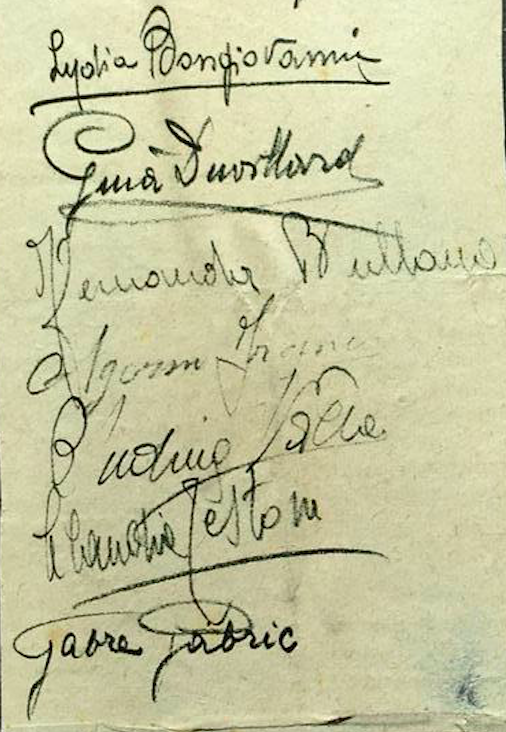
The signatures of all seven members of the 1936 Italian Olympic women’s athletics team 1936
Lydia Bongiovanni, Gina Duvillard, Fernanda Bullano, Franca Agorni, Ondina Valla, Claudia Testoni, Gabre Gabric
Source: ApGG.
During 1936, other athletes such as Maria Caselli, Maria Alfero, and Viviana Meille joined the team. At the 1936 National Championships, held at the Forza e Coraggio sports centre in Milan, Jolanda Colombo took long jump gold recording a jump of 5,06m, Viviana Meille was the winner of the 200m silver medal and Maria Caselli claimed 800m bronze. The Filotecnica “B” team, composed of Jolanda Colombo, Alfero, Meille and Agorni, were the 4x100m relay bronze medallists.
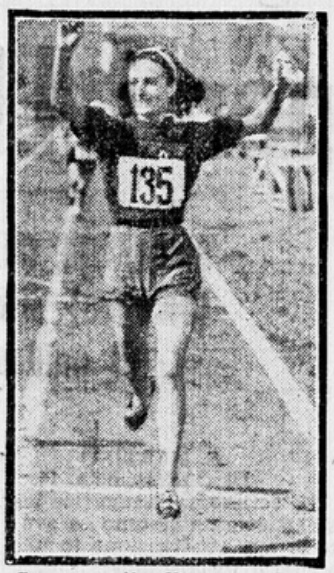
Maria Caselli, winner of a 600m race in Rome
Source: Il Littoriale, 12/01/1937, p.
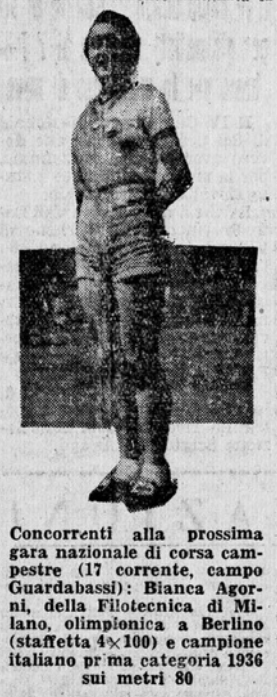
Franca [not ‘Bianca’] Agorni, here being praised in the caption for her participation to 1936 Berlin Olympics
Source: Il Littoriale, 14/01/1937, p. 6
How could the 20-years old Jolanda Colombo win the long jump national title? The Gazzetta dello Sport journalist Luigi Ferrario was quite cynical: since FIDAL coaches forbade Ondina Valla and Claudia Testoni to compete in the event in order to save both of them for the Olympics, in events such 80m hurdles, where Jolanda had no strong opponents. Nevertheless. Ferrario added, her 5,06m jump was an outstanding performance for her standards. Another Gazzetta journalist penned an interesting portrait of Jolanda, that cast a light on the GSLF athletes life outside the sporting arena: “The long jump event was won by an ecstatic-blue-eyed and curly-brown haired girl, Jolanda Colombo, who just turned 20. She wore an orange shirt and light-blue shorts” – Filotecnica’s kit! GSLF sent 8 athletes to this Italian Championship, saving 3 for the national basketball championship. “Colombo is the champion” declare with their eyes shining cav. Preti and the itty-bitty coach Cifarelli, “she began just one year ago [1935], and she started to shine since the beginning”. But even those runners, that would compete in the relay race, despite the fact they were almost babies, should be considered as up-and-coming athletes. When do they train? Colombo works as a clerk, the remainder as mill workers. In the evening, after work, they sped off to campo Giurati or the Forza and Coraggio sporting centre, where they trained until the last rays of light, and sometimes beyond that. When didn’t arrive home. their parents knew for certain that it was a training night. That’s how to win those most coveted national champion titles! [La Gazzetta dello Sport, 06/07/1936, p. 4]
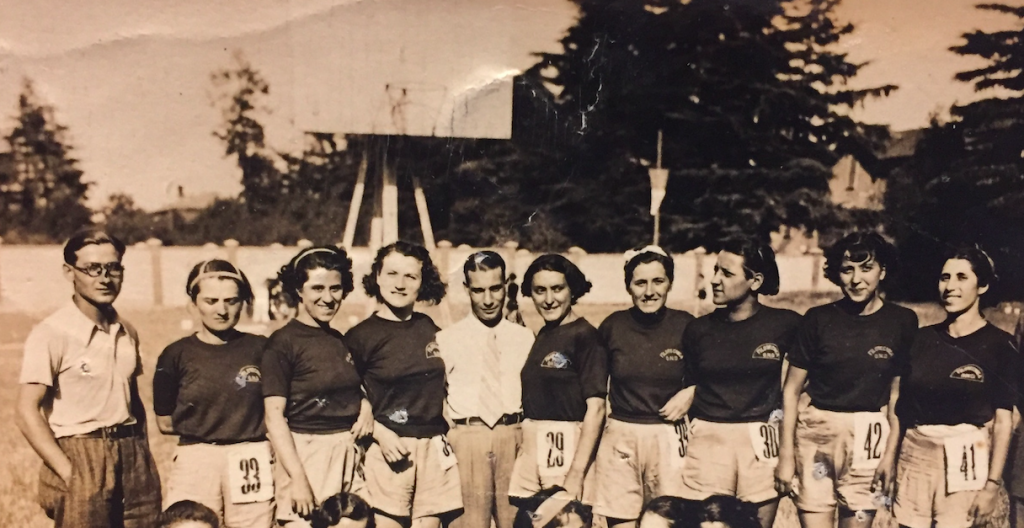
Jolanda Colombo [4th from left, n. 34] in Castellanza, with her Filotecnica teammates: her sister Carla [2nd n. 33], Franca Agorni [6thn. 30], Brunilde Amodeo [8th n. 30], Ellera Stroppa [10th n. 41].
Note that the number sequence is also alphabetical from Agorni to Stroppa.
The coach [5th from left] may be Cifarelli, since the press reported that he was very tall [and Franca Agorni, by his side, was the tallest of the Italian women’s athletics team in Berlin 1936].
The photograph is taken in Castellanza [compare the background with1930 photo, especially the wall and the building beyond it, here- https://images.app.goo.gl/swwdW92tZqRBZLxQ8 ), where many GSLF athletes competed in a local women’s athletics meet in 28th July, 1935.
Source: Archivio privato Brunella Bracardi [courtesy of Francesco Bacigalupo]
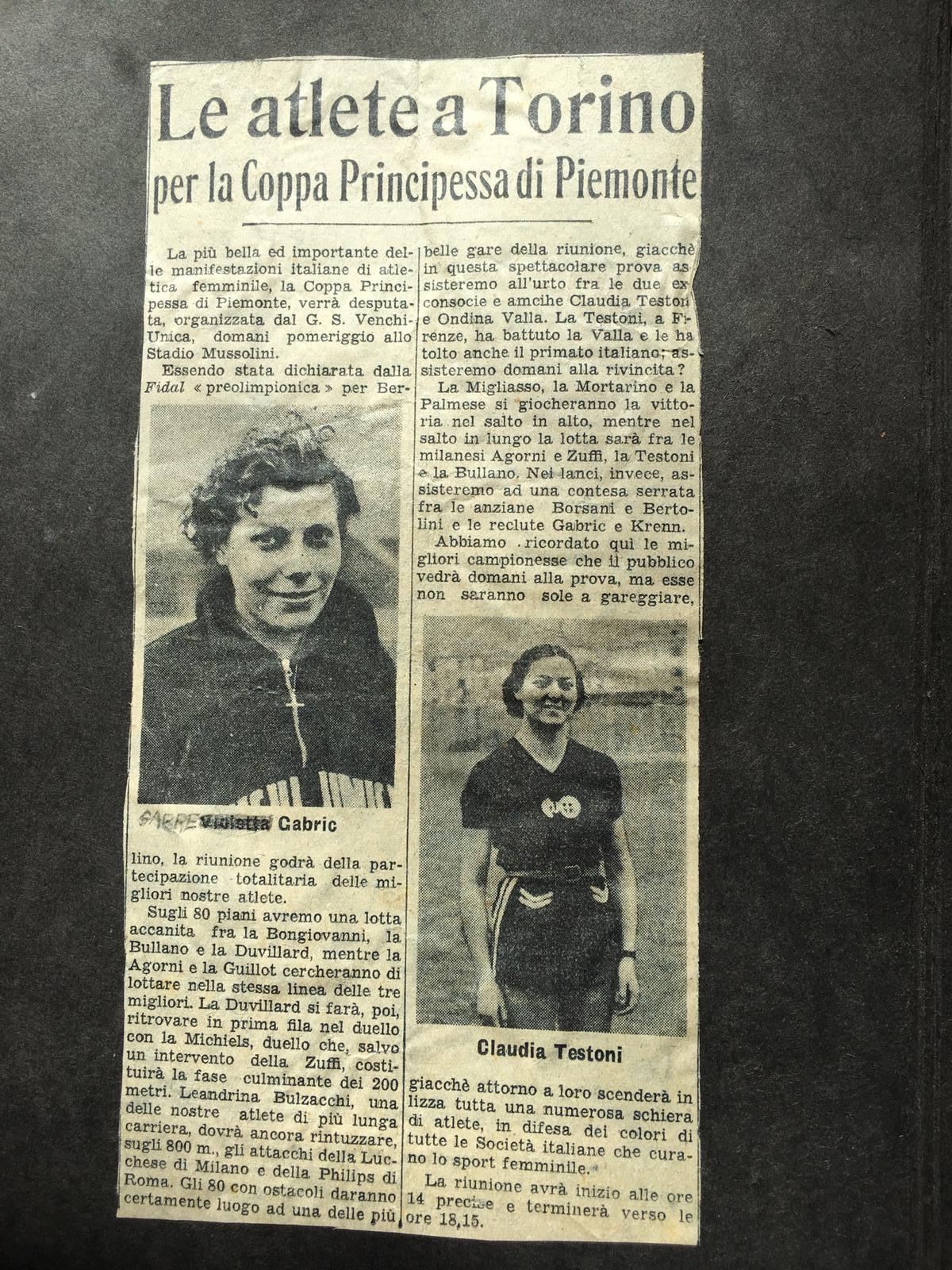
A clipping about Gabre’s time with GS Venchi Unica
Note that the name ‘Violetta’ [which is the correct translation of Croatian ‘Ljubica’, Gabre’s actual birth name] was altered to ‘Gabre’, that was how she was known in Italy. Readers may recall that a similar thing happened to Ondina Valla, whose birth name was Trebisonda
Source: ApGG.
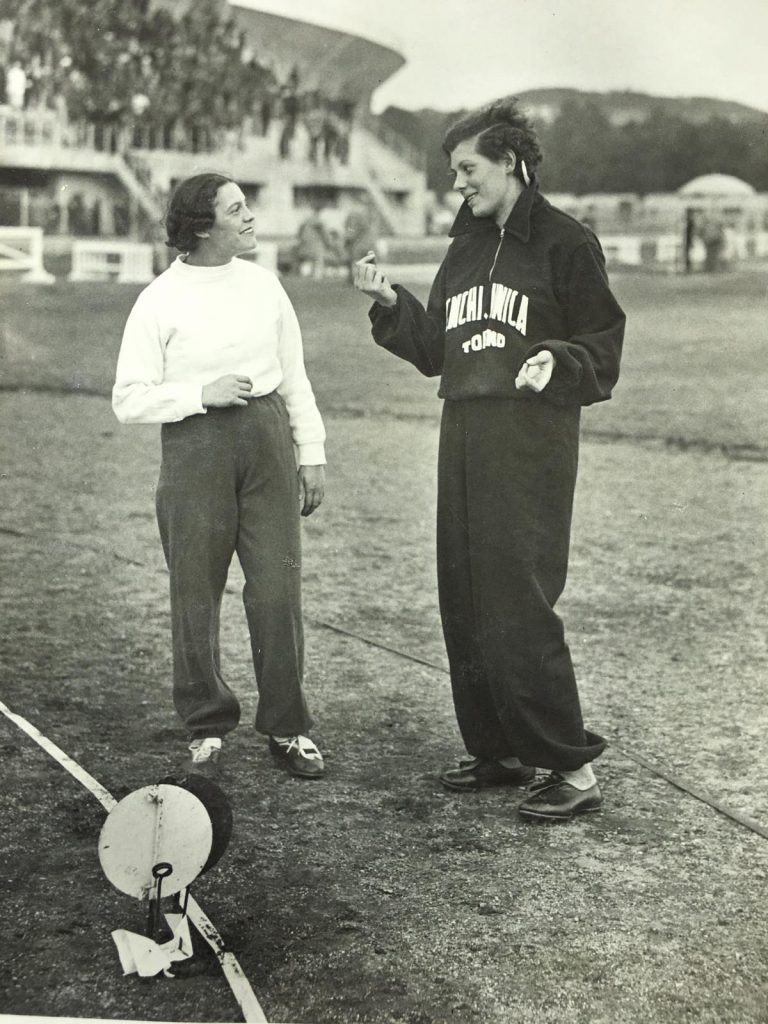
GS Venchi Unica’s throwers Bruna Bertolini and Gabre Gabric.
Source: ApGG.
Gabre Gabric’s first national discus throw record in 1936: please note the last list. Early 1930s Italian throwers such as Piera Borsani and Bruna Bertolini couldn’t improve on the 1929 record by Vivenza, but Gabre did it despite of her young age >br> Source: La Gazzetta dello Sport, 12/06/1936, p. 2.
Gabre’s daughter, Lyana Calvesi, told me that her mother was hired by La Filotecnica, as a clerk, the very same type of job that Ondina Valla had in Bologna during that period, this was the only way to ensure that women’s champions, who came from low or middle class had some kind of economical help.
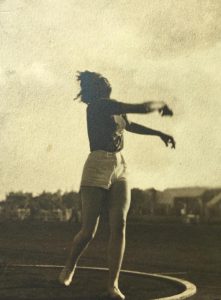
Gabre Gabric
Source: ApGG.
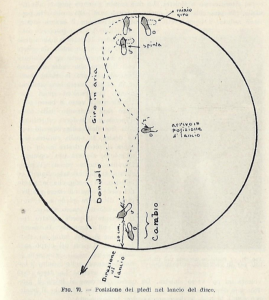
How to use feet during a discus throw event.
Source: Atletica femminile [1943], p. 131.
The improvement of the Filotecnica team became evident at the 1937 Italian National Championship, held in Piacenza on 1 August. GSLF, who had been ranked 5th the previous year, finished a triumphant 2nd. The athletes won a host of medals;
Gold: Gabre Gabric – discus, Jolanda Colombo, Carla Pellegrini, Franca Agorni and Maria Alfero – 4x100m relay [52” 9/10]
Silver: Maria Alfero – 80m hurdles, Maria Caselli – 800m, Gabre Gabric – long jump, Ita Penzo – 200m
Bronze: Jolanda Colombo – long jump
The GS Venchi-Unica team from Turin obviously now had a strong opposition!
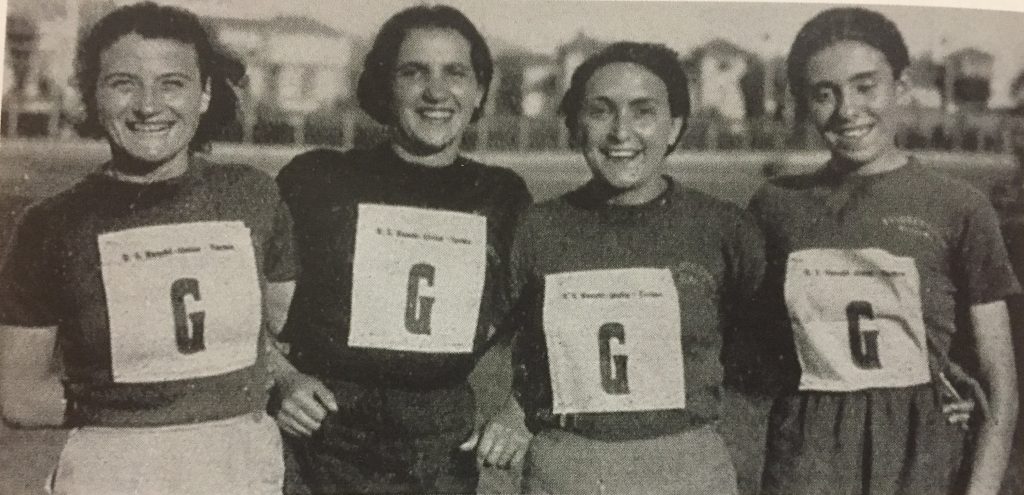
Gold-medallists, the Filotecnica 4x100m team at 1937 Italian National Championship
L to R Jolanda Colombo, Carla Pellegrini, Franca Agorni, Maria Alfero
Source: https://bit.ly/2ZZ9Xmq
It came as no surprise, when in May 1938 Filotecnica and GS Venchi Unica was chosen as the two Italian representatives for the international team meet held in Turin, at Stadio Mussolini, against the French Team of Alsacienne Lorraine from Paris. GSLF won gold with Gabre Gabric in shot put and discus, silver courtesy of Maria Alfero in 100m, Ita Penzo in both long jump and 200m and bronze in the 4x100m relay and Pulici, high jump, as well as several 4th, 5th and 6th placings. In the final team ranking, Filotecnica finished third, nevertheless, the Foglio d’Ordini [a sort of internal journal of National Fascist Party] praised the Milanese athletes, and Istituto Luce [the Fascist propaganda institute] released a complementary video about that event.
This is the only surviving GSLF video. Filotecninca athletes can be recognized by their light orange shirt with GS Venchi Unica wearing their traditional dark green shirt. Gabre Gabric, who is filmed during a discus throw [0.23s, number 13], can be easily recognized in the GLSF line [0.45s], not only from her position at the front of the line of athletes but also because she is much taller than the rest of the women. <br> Source: Istituto Luce.
In the 1938 Italian National Championships, held in Parma in July, Filotecnica were again second in the team rankings, mainly thanks to Maria Alferom, who won 1oom gold [12” 7/10s], Ita Penzo, 200m gold medallist with a time of 26” 7/10s, Gabre Gabric who took the discus silver and Rosetta Cattaneo who claimed a bronze medal in both 100m, and javelin. In October, during the Gran Premio La Stampa, held in Turin, a Filotecnica team composed of Davico, Penzo, Cattaneo and Alfero broke the 4x75m national team record with a time of 38’’ 3/10s.
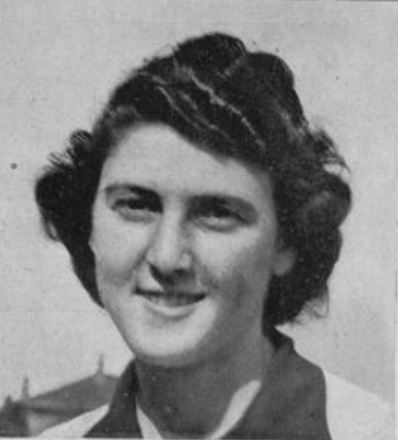
Rosetta Cattaneo
Source: Rivista Di Bergamo, July 1939, p. 333
Meanwhile, on September 17th/18th, the women’s competition of 2nd European Athletics Championship took place in Wien: Claudia Testoni, who finished just outside the medals in 4th at 1936 Berlin Olympics, finally won her gold medal, finishing ahead of the field in the 80m hurdles. The other Italian medals in Wien came from in the 4x100m hurdles, where the team of Alfero, Apollonio, Cattaneo and Lucchini came third, behind Germany and Poland, the team included two Filotecnica athletes, half of the team Being just 16 years and 201 days old at the time, Maria Alfero is still the youngest-ever Italian medallist in a European Championship.
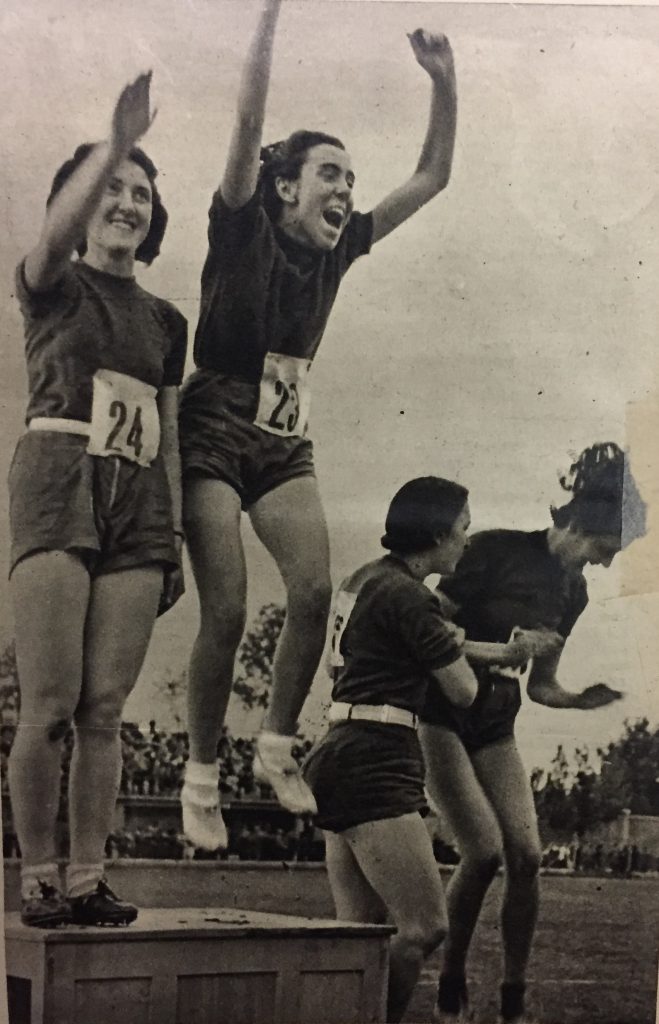
The original caption states that this is the Filotecnica 4×100 relay team winning the Italian ‘primato’, composed of Cattaneo, Alfero, Agorni and Penzo.
Nevertheless, this combination was only recorded as a team just the once, when the 4 athletes won a silver medal in Milan [3 July 1938]. So we could say that this image could be either
1] a Filotecnica 4x75m team who broke the Italian National record in Turin [October 1938], composed of Davico, Penzo, Cattaneo and Alfero
or 2] as the first athlete looks very similar to Carla Pellegrini, this could be the Filotecnica 4x100m relay team of Jolanda Colombo, Carla Pellegrini, Franca Agorni and Maria Alfero, who won the 1937 Italian National Championship. The second athlete, with her hands in the air is definitely Maria Alfero.
Source: December 1938, p. 19.
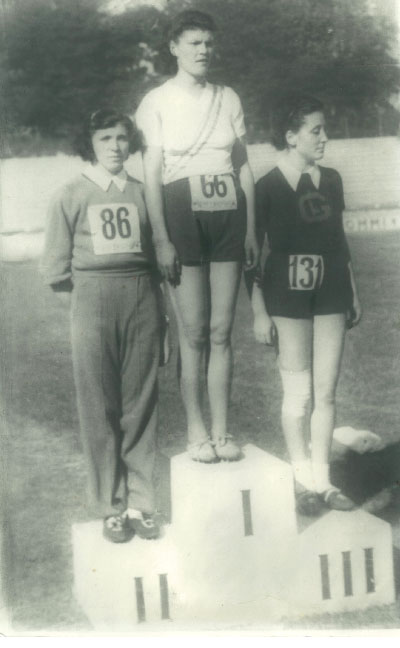
The 1938 Italian National Championship shot put podium. Giorgina Grossi winning gold and Amelia Piccinini, former Alessandria calciatrice, taking silver
Source: http://www.budrionext.it/?p=14828
In that year, FIDAL organized an Italian Team Championship: the final meeting was scheduled for 2 July 1939 at the Arena Civica, Milan. The Milanese team had to compete against GS Venchi Unica and Dopolavoro Marzotto – AND they won against their opponents from Turin, by just 3 points, 72 – 69! The sports press were full of praise for the Filotecnica athletes, who maybe lacking the Venchi-Unica quality, made up with grit, determination, and esprit de corps. The Milanese athletes won almost all throwing and jumping events, their full medal haul being gold for Rosetta Cattaneo [javelin and 200m] Gabre Gabric [discus] Giorgina Grossi [shot put] and Modesta Puhar [high jump] as well as a raft of silver and bronze finishes.
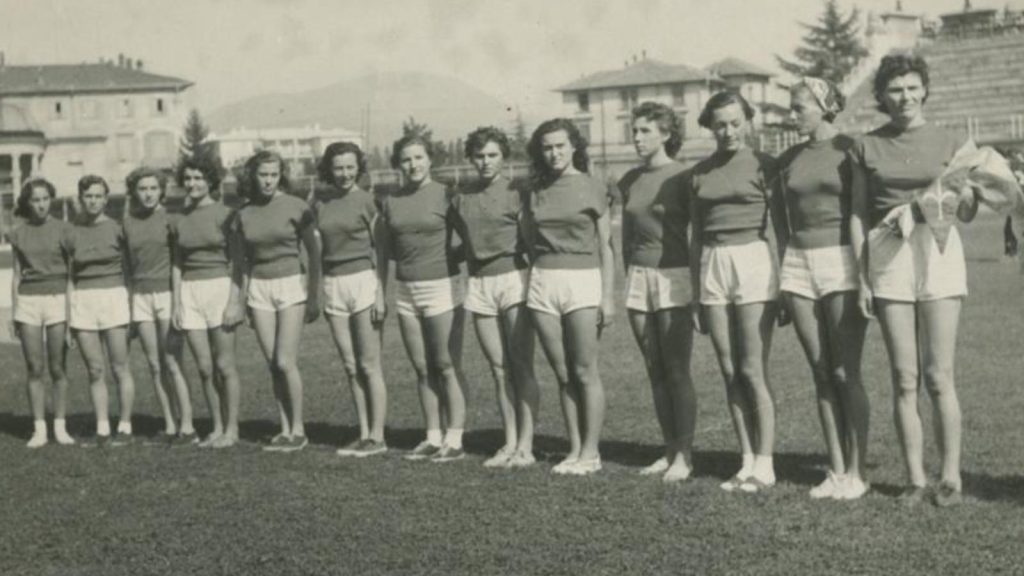
This is a very rare Filotecnica team picture [undated]. The first from right is Giorgina Grossi, the second Gabre Gabric.
Source: ApGG.

The 1938 GS Venchi Unica line-up [L to R] – Michiel, Maffei, Claudia Testoni [white], Giorelli, Gallo, Lucchini, Berando, Michiels, Clivio, Fernanda Bullano [white], Balbo, Daldin, Leandrina Bulzacchi [white]. Please note the white champions shirt worn by three of the athletes
Source: Lo Sport Illustrato, December 1938, p. 19.
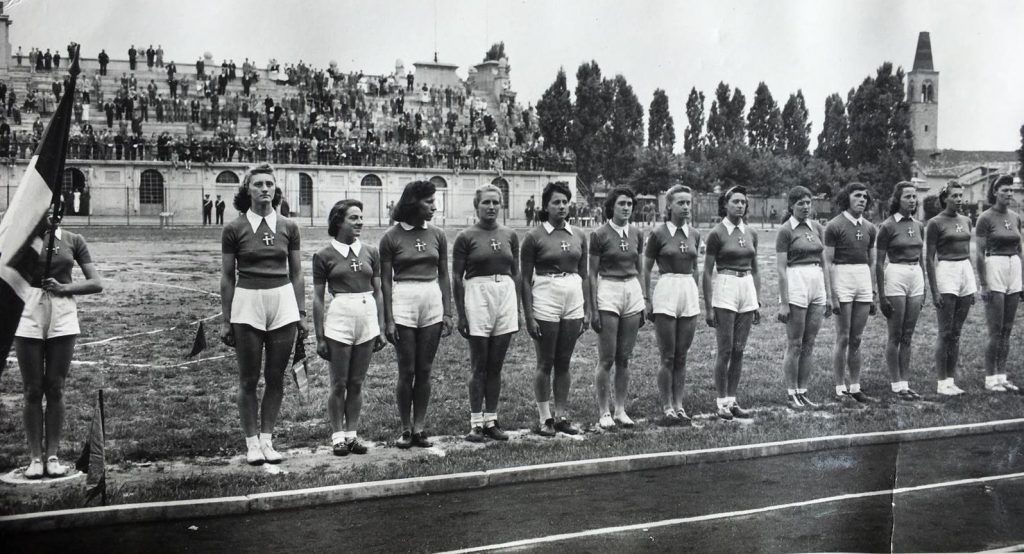
This original photo has few clues to its origin – but can be identified as the team picture of Italy vs Poland, at an international meeting held in Stadio Brumana, Bergamo [see the bell-tower in the background, belonging to former San Nicolò Abbey] on June 25th, 1939.
Athletes are: ? [obscured by the Italian flag], Ondina Valla, ?, ?, Cressi, ?, Rosetta Cattaneo [GSLF], Lucchini, Claudia Testoni. Cordiale, Piccinini, Spaggiari, Gabre Gabric [GSLF], Giorgina Grossi [GSLF]
Source: ApGG.
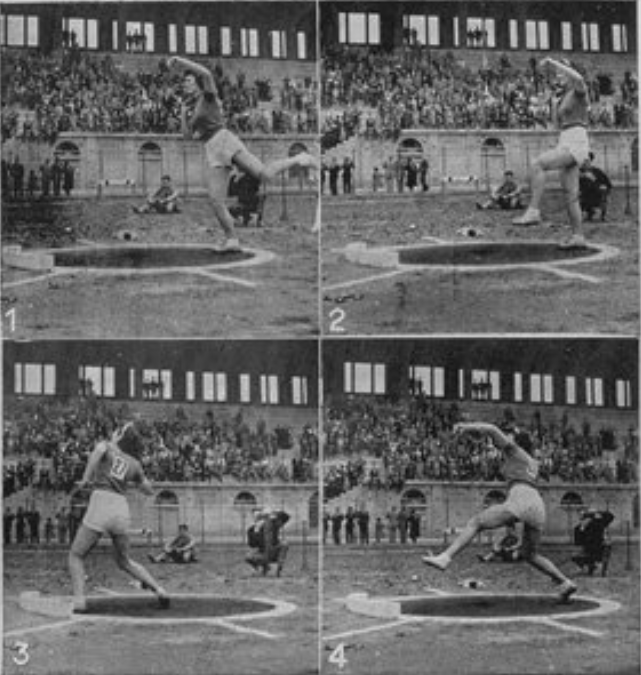
Giorgina Grossi putting the shot during the international meeting Italy – Poland [Bergamo, 1939]
Source: Rivista di Bergamo, July 1939, p. 334.
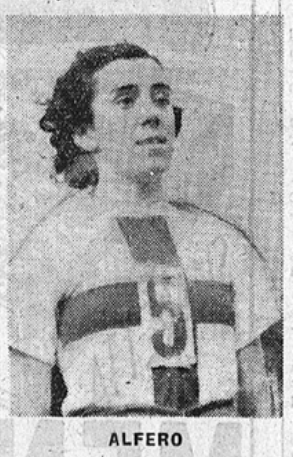
Maria Alfero
Source: Il Littoriale, 21/06/1940, p. 4
Then things started to go wrong, beginning in 1941 when Maria Alfero, transferred to Dopolavoro Singer, Monza. The Italian press pointed to the generational changes that took place during the 1941 Italian National Championship, held in Modena in July when seven national champion titles from 9 were won by new athletes! That meeting was something of a catastrophe for the Filotecnica team, who won just two medals, Giorgina Grossi, 2nd in the shot put and Rosetta Cattaneo, in 200m and the team failed to finish in the top 3 in the overall rankings, and even the previously reliable Gabre Gabric only managed to come 7th in the discus.
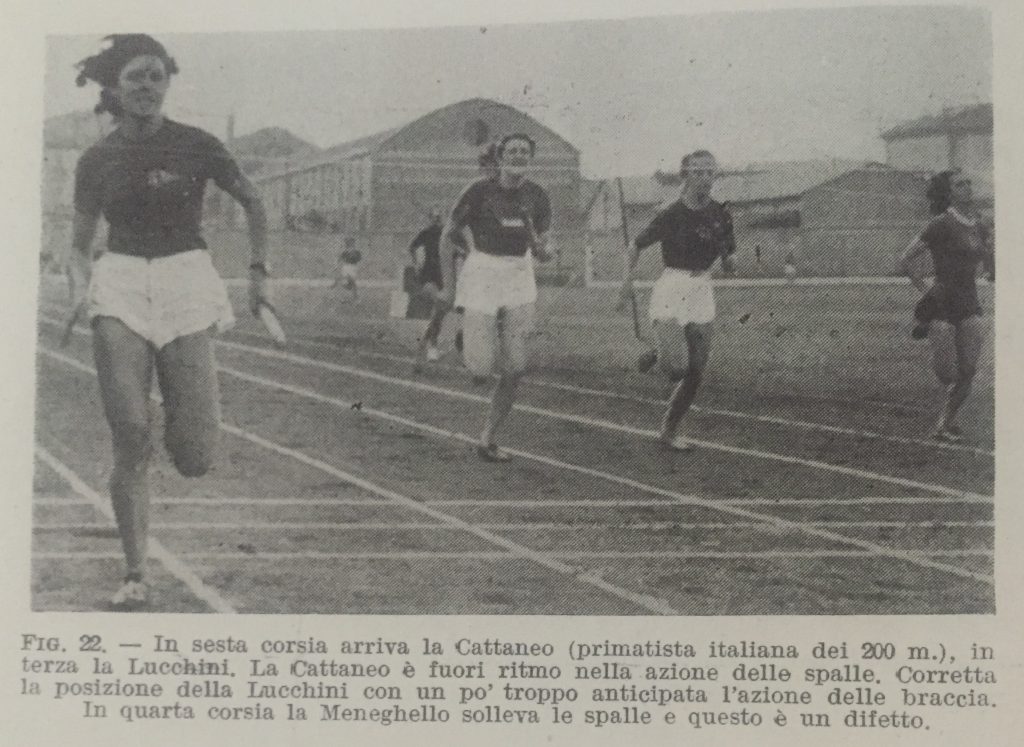
In the caption to this image from a 1943 women’s athletics book, Rosetta Cattaneo [1st from left] is criticized for the position of her shoulder during her performance in the 4x100m relay: please note the baton
Source: Atletica femminile [1943], p. 68.
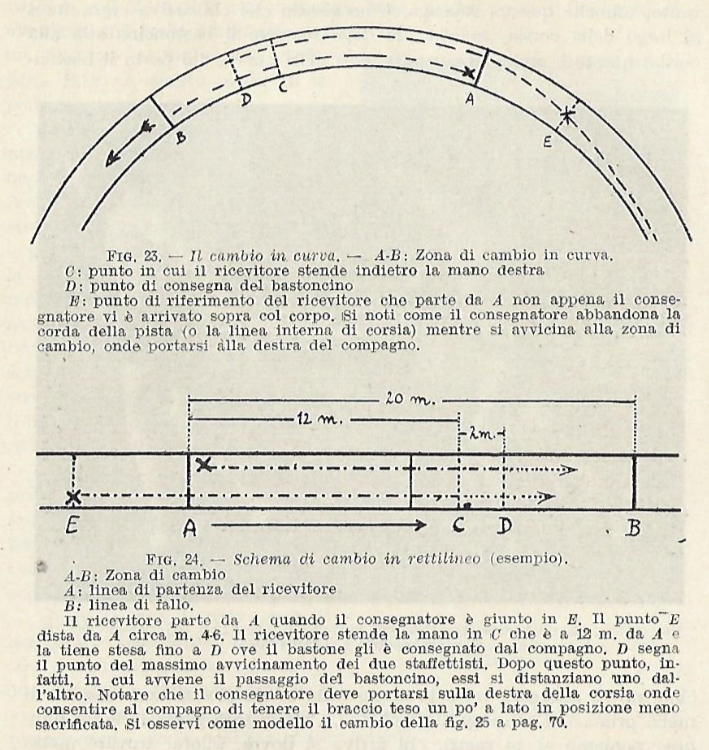
How to pass the baton in curve, and in straightaway.
Source: Atletica femminile [1943], p. 69
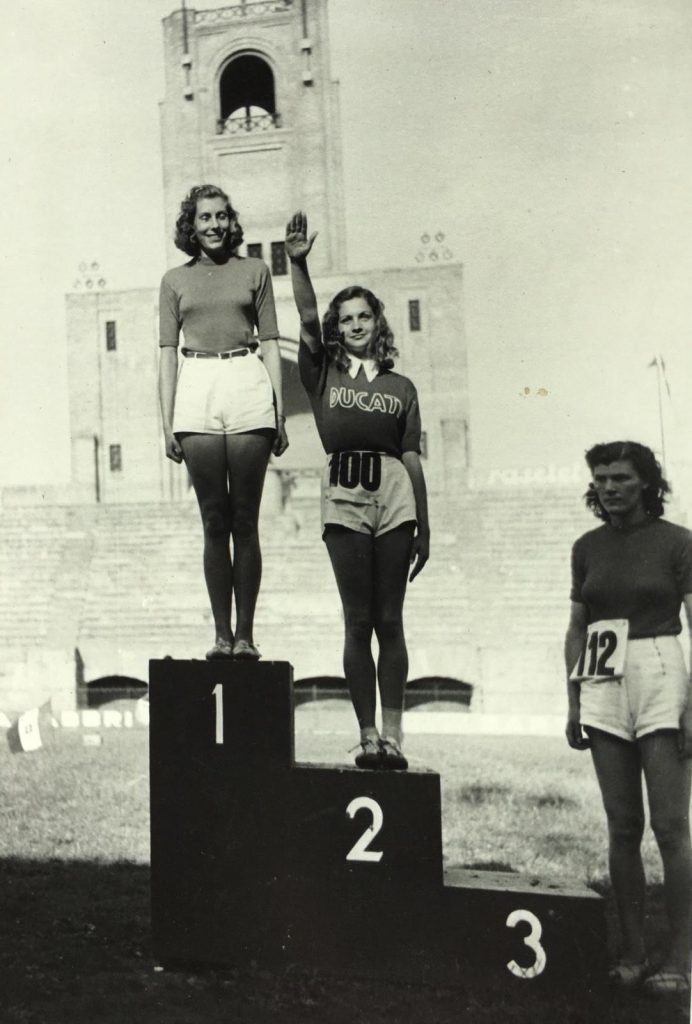
The 1942 Italian National Championship discus: Gabre Gabric [I], Gina Tagliapietra [SS Ducati Bologna, II], Giorgina Grossi [III]. Both Gabre and Giorgina are wearing the orange GSLF shirt, and white shorts.
Source: ApGG.
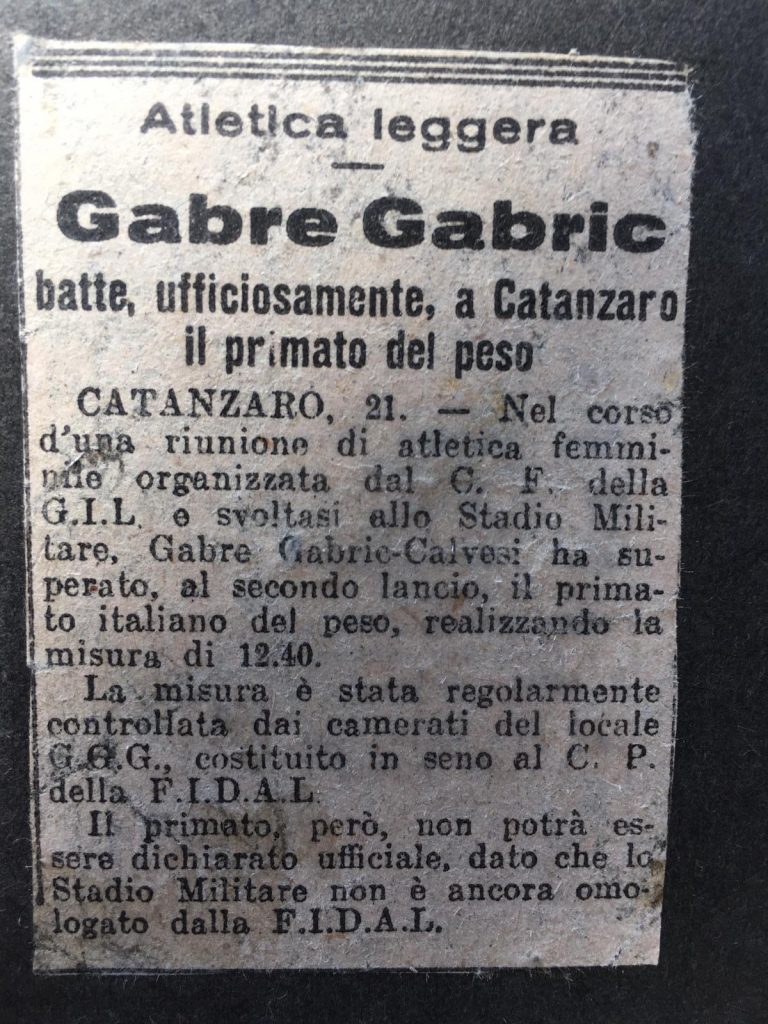
A clipping about Gabre’s 1942 ‘lost’ record
Source: ApGG.
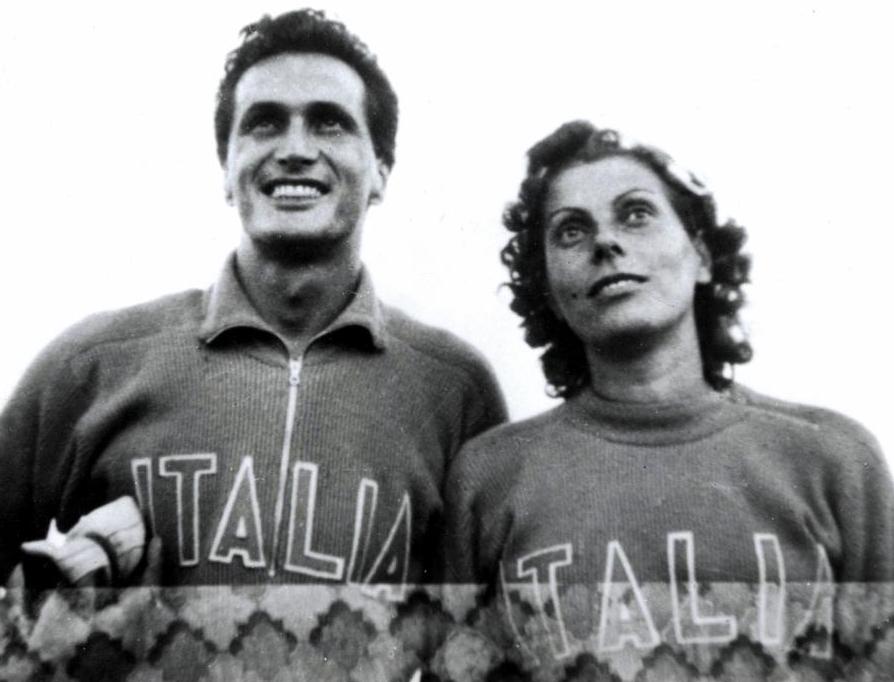
Ottavio Missoni and Gabre Gabric, who both competed at the 1948 London Olympics. The founder of the Italian fashion label, who born in 1921, was also Dalmatian, he was the best Italian athlete in the Italian city of Zara/Zadar (400 m hurdles and 4x400m relay). Some say that at the very beginning Gabre – like a lot of her fellow citizen – was just an Ottavio fan, then one day, someone suggested that she didn’t just watch the others practicing, but to partake in the athletics practice herself … and the story began!
Source: ApGG.
Despite the war and the forthcoming Italian armistice, FIDAL organized some events in Spring and Summer of 1943, the last of which was the 1943 Italian National Championships, held in Arena Civica [Milano], on 4 July. Rosetta Cattaneo was again 200m Italian Champion, clocking 26′ 1/10s and Giorgina Grossi [who was married the previous year, in Milan)]won shot put silver. Although they were the favourite, the Filotecnica 4x100m relay team failed to qualify for the finals: a bad omen, with the dark clouds of war approaching Milan, soon there was no time for sport, surviving became the main goal for all those sportswomen.
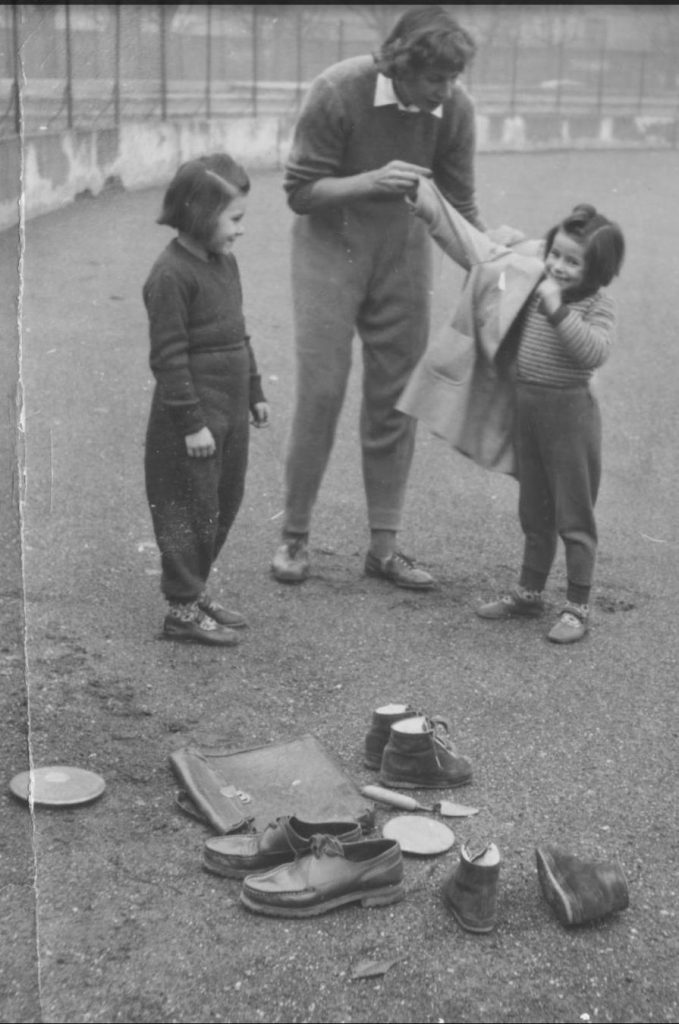
The photo was taken after the end of WW2, at campo sportive Rigamonti [Brescia]
Gabre Gabric and her 2 daughters, Mariella [b. 1943] and Lyana [b. 1944] On the ground in front of them you can see a discus and a trowel, for digging starting holes for sprinters
Source: ApGG.
Article © Marco Giani
For more sources about GS La Filotecnica, see:
For more sources about Dopolavoro Istituto Previdenza [DIP], see:
For more sources about women’s basketball in Milan during the Fascist regime:

![The Eternal Seconds of Italian Women’s Athletics:<br>The History of Gruppo Sportivo La Filotecnica [Milan, 1935-1943]](https://www.playingpasts.co.uk/wp-content/uploads/2020/07/PP-banner-maker-3.jpg)
